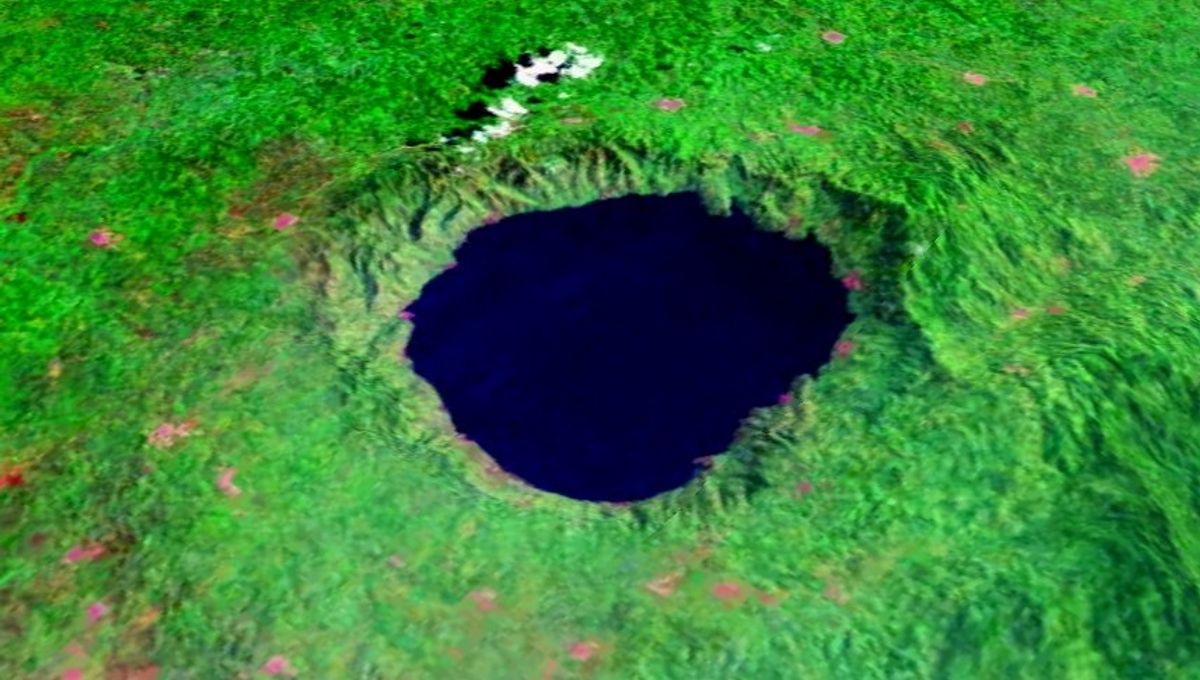
Four impact craters a million years old or less may be substantially larger than previous measurements. If this is true, and some scientists have already expressed doubts, it would mean the asteroid that made them, and the energy released, was much larger than we thought. This in turn would suggest current estimates of the risk of an encounter large enough to destroy human civilization may be too low by a factor of up to 10.
When most people think about a threatening asteroid they imagine something of the size that wiped out the non-avian dinosaurs, along with the majority of species on Earth. Such events are much more common in films such as Don’t Look Up and Deep Impact than in real life – there’s only been one in the last few hundred million years.
Scientists with the responsibility to prevent such things are much more worried about smaller events, which might not end humanity but could hinder food production for years, spelling the deaths of billions. It’s these sorts of events that Dr James Garvin of the Goddard Space Flight Center argued at last week’s Lunar and Planetary Science Conference in Texas may happen disturbingly often.
Garvin and team used high-resolution satellite imagery to measure the size of three confirmed impact craters and one suspect: Pantasma (Nicaragua), Bosumtwi (Ghana), Zhamanshin (Kazakhstan), and Itturalde (Bolivian Amazon rainforest), respectively. In each case, he found signs of an inner and outer rim, with the existing diameter estimates based on the inner figure. If the outer rim is actually the true crater boundary, the craters are 2.5-3 times as wide or up to nine times larger in area.
There are few dino-killer-sized asteroids with orbits inside Mars, and comets that big seldom stray this close to the Sun. Objects around 1 kilometer (0.6 miles) across are much more common. A hit from one of these would be locally catastrophic, but the global effects would usually be brief – although there’s hot debate about one historic possibility. However, they haven’t coincided with a civilization pushing Earth’s production capacity to the limit yet.
An object like that should leave a crater 25-35 kilometers (15-21 miles) wide, at least if it hits on land. To estimate how often this happens, planetary scientists have used three methods. They’ve looked at the number of known objects with Earth-crossing orbits, counted recently made craters of suitable size on Earth, and conducted a similar lunar crater census.
The Moon is considered the most reliable of these since there is no erosion nor obscuring forest or ocean. Nevertheless, it has been a source of some comfort that all three seem to line up, giving a figure of around 1.5 collisions over million years.
However, the oldest of Garvin’s craters is thought to be 1.05 million years old, and those are just the ones we can find. There are likely three in the ocean for every one on land, and if there is one under Antarctica we might not have found it either (debate continues about a Greenland candidate). Even on inhabited continents, some might remain undetected; one of Garvin’s four, Pantasma, was only identified in 2019 hidden beneath the Central American rainforest. That would put the terrestrial record in sharp contradiction to the lunar one.
There are caveats; Garvin admits he hasn’t been to the craters to examine them, let alone found evidence in ice cores or sediments of such large impacts at the appropriate times. And, although presented at a conference of experts, the work has yet to be published in a peer-reviewed journal. Consequently, Dr Bill Bottke of the Southwest Research Institute told Science, “I’m skeptical. I want to see a lot more before I believe it.”
Sometimes the debris thrown up in impacts can land to produce ridges outside the crater proper, and some scientists told Science they think this is what Garvin has found. He doubts these would have survived hundreds of thousands of years or erosion, however.
Given the existential risk involved here, this isn’t a topic we can afford to leave in the unsolved mystery basket until someone gets around to investigating.
The paper was presented at the Lunar and Planetary Science Conference 2023.
Source Link: Large Asteroid Threat To Earth Has Been Underestimated, Scientists Claim